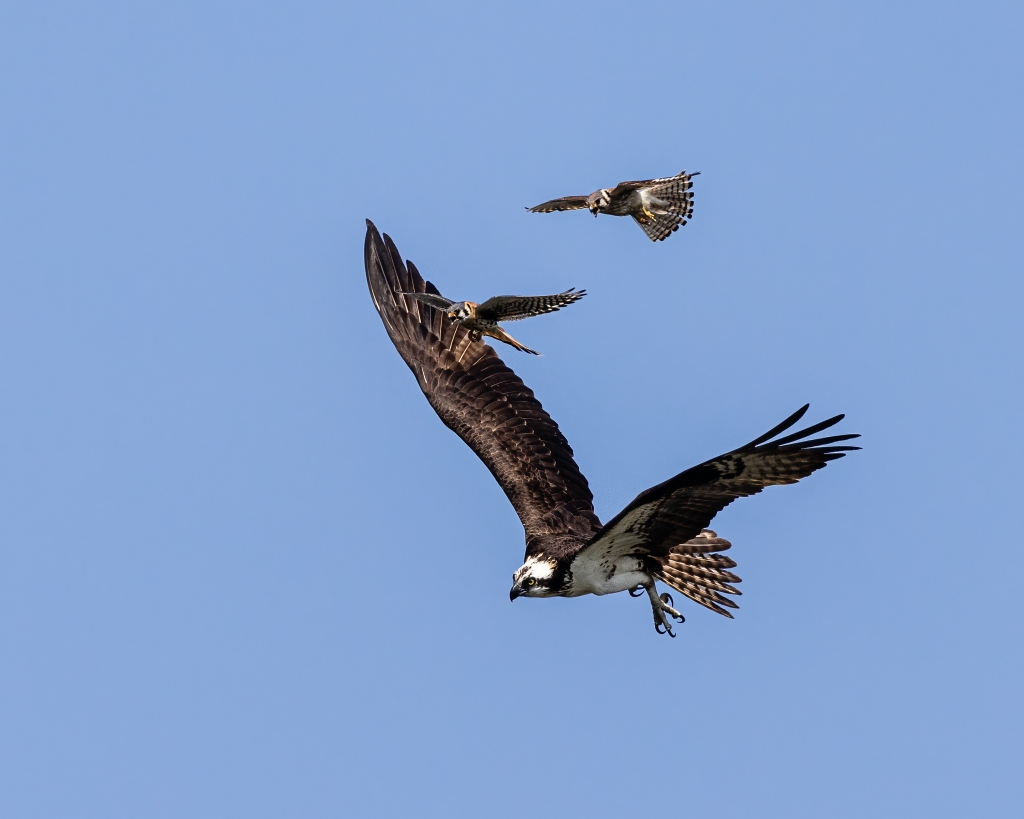In Michigan’s Eastern Upper Peninsula, one of MNA’s largest conservation landscapes protects a critical migratory channel for rare songbirds and majestic raptors alike. The biological diversity, size, and relatively undisturbed quality of the coastal wetlands and minimally fragmented forests along the St. Mary’s River corridor make this an important conservation area for MNA. Nearly 2,000 acres are protected by MNA sanctuaries in this vast conservation complex.

As migratory birds funnel through the St. Mary’s River on their way to wintering and breeding grounds, this connecting waterway between Lake Superior and the Straits of Mackinac provides a globally significant passageway for many rare species. Numerous birds utilize stopover habitat in this corridor including black tern, Caspian tern, osprey, merlin, bald eagle, American bittern, northern harrier, and others.
One sanctuary in the St. Mary’s River Corridor is the 762-plus-acre Schafer Family Nature Sanctuary at Roach Point, which is named to honor brothers Mason C. and Melvin C. Schafer and their family for their many contributions to MNA. The sanctuary contains eight natural communities including Great Lakes marsh, boreal forest, northern mesic forest, northern wet meadow, bog, northern shrub thicket, poor conifer swamp, and rich conifer swamp. Numerous species of wildlife and plants have been documented using the sanctuary including numerous rare species including the Lapland buttercup, black tern, American bittern, bald eagle, osprey, and Alaska orchid.
MNA’s 182-acre Munuscong Lake Nature Sanctuary is just a half mile west of the Schafer Nature Sanctuary. There are significant acreages of wetland along the south shore of Lake Munuscong, from Maple Point on the west and continuing east beyond the mouth of the Gogomain River. These wetlands continue upstream into the Gogomain Swamp – a large, wild, and minimally fragmented swamp of which much is now protected as State Forest. The biological diversity, size, and relatively undisturbed quality of the coastal wetlands and minimally fragmented forests between Munuscong Lake and the Gogomain Swamp make the area an important conservation project for MNA.
The sanctuaries include significant coastal and wetland habitats and help protect a large acreage of northern forest and wildlife habitat. MNA’s Conservation Director, Andy Bacon, explained, “One of the notable features of this area is that it serves as important stopover habitat for neo-tropical and other migratory species. On one site visit, six species of warblers were observed as well as numerous ruffed grouse.”

MNA’s Carlton Lake Nature Sanctuary lies at the southern end of its namesake lake in this corridor with significant acreage of undeveloped open water and wetlands—providing 520 acres of habitat for a great variety of conservation priority bird species. The sanctuary likes within the Great Lakes migratory bird corridor that follows the St. Mary’s River between Lake Superior and the Straights of Mackinac. Birds observed here include the Virginia rail, sora rail, ring-necked duck, green heron, sedge wren, pied-billed grebe, and sandhill crane.
MNA’s Founders 4 the Future Campaign expands the sanctuary to 880 acres, and would further protect the large-scale and primarily undeveloped character of the Carlton Lake complex. This secluded area is beneficial for a diversity of wildlife species considered to be conservation priority species including Michigan threatened least bittern, common loon, Caspian tern, and merlin, as well as the Michigan special concern American bittern, bald eagle, northern harrier, and osprey.
Considered to be a high-quality coastal wetland due to the relatively undisturbed quality and minimally fragmented forests between Lake Munuscong and the Gogomain Swamp to the south, the Rocky Point Wetlands Nature Sanctuary protects an area containing a variety of tree cover and forested community, providing abundant habitat for a diversity of wildlife species considered to be of conservation priority—and importantly, many migratory birds.
The Schafer Family Memorial, nearby Lake Munuscong Nature Sanctuary, and Rocky Point Wetlands Nature Sanctuary together comprise MNA’s Roach Point Conservation Area. Combined with Carlton Lake Wetlands and encompassing nearly 2,000 acres in all, these Conservation Areas represent MNA’s ongoing commitment to enhancing the conservation values and improving the ecological integrity of the nature sanctuaries held within our extensive network.






